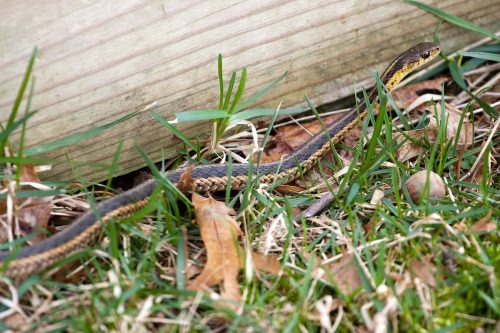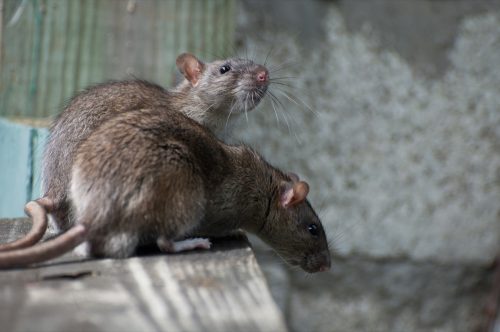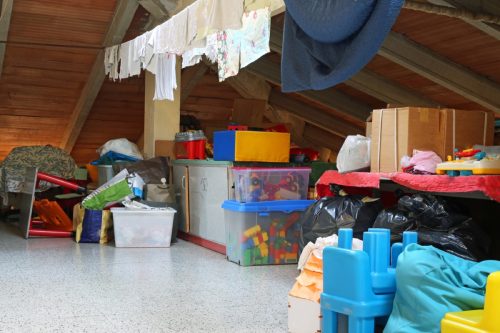7 Ways to Snake-Proof Your Attic, According to Experts
The attic is one of the most common places snakes hide—don't neglect it.
You might associate snakes more with subterranean spaces like your basement or rooms with lots of warm appliances to hide behind, but the attic is actually one of the most common places these slithery reptiles like to camp out. When it comes to the top of your home, "if there's a way in, they'll get in," says Sholom Rosenbloom, the owner of Rosenbloom Pest Control. And with temperatures dropping, snakes are on the lookout for dark, sheltered places to conceal themselves. Avoid having to deal with this reptile situation by taking some simple precautionary steps. Read on to hear from experts about the top ways to snake-proof your attic.
READ THIS NEXT: 9 Ways to Snake-Proof Your Yard, According to Experts.
1
Seal vents.

One of the most common ways snakes find their way into the attic is through vents. "Snakes are ectothermic which means they rely on the environment around them to maintain their body temperature," explains Georgina Ushi Phillips, DVM, advising veterinarian and writer for The Reptile Room. "That makes the cool shaded vent pretty appealing on a hot summer day!"
The best method for sealing off vents is with wire mesh. This allows air to flow through while keeping snakes out. Once you've added this, though, "don't just visit it once every five years and call it good," advises Rosenbloom. Check vent covers regularly to ensure they haven't been disturbed or gnawed on.
2
Close up any other openings.

There are plenty of other openings that give snakes access to your attic. "Similar to vents, cracks and crevices around your home are very appealing to a snake that's trying to regular its body temperature," notes Phillips. They're also appealing to other rodents, a snake's main food source (more on that to come).
Keep in mind that snakes are able to find their way into some pretty tight spots, so be sure to close up even the smallest crack or hole. "Check the foundation, walls, and ceiling for gaps, and seal them with caulk or another appropriate material," says Jennifer Mecham, a snake expert and writer with Reptiles Blog.
READ THIS NEXT: The First Place You Should Check for a Snake in Your Home, Experts Say.
3
Trim nearby trees.

According to A.H. David of Pest Control Weekly, trees that abut your home are one of the easiest ways for snakes to come in. "Cut or trim trees near your attic to block any way for snakes to climb and enter," David says.
Mainly, you want to be sure no branches are leaning on the roof or gutters, as this allows snakes to slither right onto the house and search for an opening.
4
Make sure there are no other critters.

As mentioned, snakes feed on other rodents like mice and rats. "Rodent or their infestation has a distinct smell that attracts snakes to come and prey on them," says David. Snakes also eat squirrels, birds, and insects. So, if you see droppings, feathers, or dead bugs, it's best to call a pest control expert.
In addition to food, snakes also look for water. "If you have a pet that spends time in the attic, make sure to keep their food and water dishes clean and empty," advises Mecham. Leaks in the roof or windows are another culprit.
For more snake advice delivered straight to your inbox, sign up for our daily newsletter.
5
Clean up.

Snakes look for dark places to hide, especially when it's very cold or hot out. They also need somewhere to nest and lay eggs, and since attics usually have plenty of piles of old stuff and little human foot traffic, they make the perfect place. A simple solution here is to clean up; put items in plastic bins (snakes have a hard time managing smooth services).
Likewise, having a mess in your yard will attract snakes even more, and they then have easier access to your home. "Piles of wood, debris, and dense vegetation are all great hiding spots not only for snakes but also for their prey," says Phillips. "Clear out these areas to make your entire property less appealing to snakes."
6
Use natural repellants.

There are plenty of commercial snake repellants available, but these can be dangerous to humans and pets. If in doubt, "you can make your own natural repellent with ingredients like cayenne pepper and vinegar," says Mecham. "Spraying the perimeter of your property with a repellent can help keep snakes away."
David suggests making an onion and garlic spray and sprinkling it around the windows and doorframes of your attic.
READ THIS NEXT: The No. 1 Sign There's a Snake Behind Your Water Heater.
7
Add certain plants.

Another easy and natural way to repel snakes is by adding plants that they dislike. "Strong-smelling plants like marigolds, lemongrass, onions, garlic, cinnamon, basil, and pink agapanthus all smell unappealing to snakes and can act as a natural repellant," explains Phillips. "You can add these plants to areas where snakes may be able to climb to deter them from making your way to your attic."
And, of course, it's always advisable to call in a professional if you have a snake problem in your attic. "They will be able to help you identify the source of the problem and will provide you with the best course of action to take," says Mecham.






















